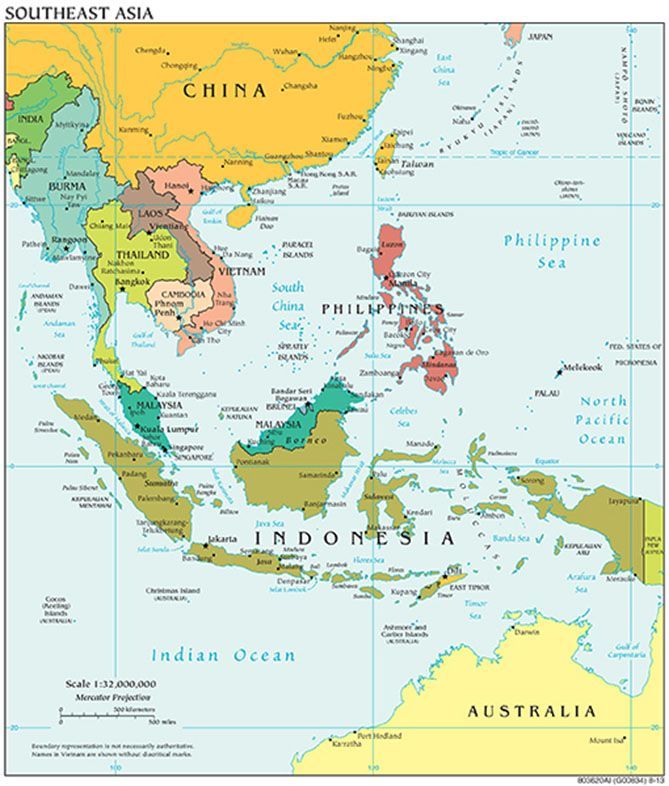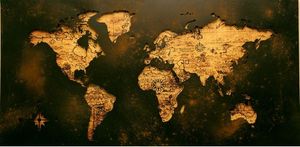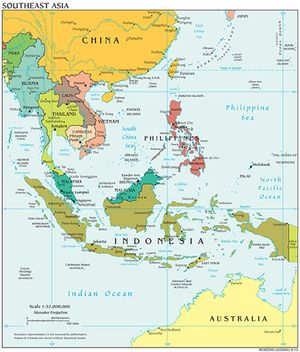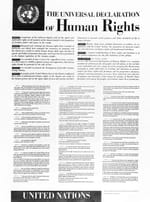Within the context of the hegemony transition in which we find ourselves, we perceive the movements between the challenger, the People's Republic of China (with its Russian appendage, and increasingly so), and the challenged, the United States, which under the Trump administration thought it could bully and develop this struggle on its own and move the balances in a way more favourable to its interests. This vision has been reframed through the new US Indo-Pacific strategy of February 2022, which we published a piece of analysis to commenting on, and which we recommend reviewing.
The United States is beginning to adopt the stratagem of changing the game board, just when China wants to hold on to it to prepare for maximum hegemonic competition, with the idea of isolating the United States, capturing Europe, weakening India and co-opting as much space as possible in the Middle East, Africa and Latin America, with the support of the poles, taking advantage of the launching base of its space in Central Asia, while preparing its strategic space around it. On the other hand, China is now facing the consolidation of an establishment that has made mistakes in its economic model, but has prospered, and must now transform itself into something else in all aspects.
For this reason, the United States is taking the line of defending the international order it is guiding through a series of changes.
China represents the most serious challenge to that order, the only country with the intention and the means to change it, and which has captured Russia for its own purposes entirely, including at the strategic level, by protecting itself through the Russian-Chinese "Heartland", and by co-opting the Russians as "barbarians of the steppes" and opening gaps, if not in the extended Western unity, then at least at the strategic level through Russia's various courses of action.
The People's Republic of China wants to begin the maximum phase of hegemonic competition with a sphere of influence and use whatever means define and allow it to win in this Industry 4.0 to become the world's leading power. This is a time to revisit this key piece of analysis to fully understand the core aspects, and how the challenger forces concentration from a full offensive plane, including ideological; and we have already started to perceive means of struggle in the new battlespace, as we pointed out with e-CNY here; or with regard to the development of Mahan's choke points by linking them to data, as we pointed out here. The spatial dimension, another of the key elements in the battle for global hegemony, is also witnessing the same line, as we perceive and point out in this piece of analysis. The way in which technology helps to define the blocs in this great struggle is given by different factors that we have been pointing out in our commentaries, for example through semiconductors. This carries over into the military field, as we reflected on China's hypersonic missiles, leading to the AUKUS collaboration to compete with China (and Russia)... and I think the European Union, through actors such as France, should be there.
The evidence is that China is preparing and has strengths that are essential to win in this new struggle for hegemony. So China is not going to deviate one iota from its trajectory, and the United States is trying to prepare itself to meet this challenge by redefining important aspects on different axes.
On 26 May 2022, Secretary of State Antony J. Blinken, in a speech at George Washington University, outlined the Biden administration's approach to the People's Republic of China.
If we focus on the purpose we will perceive that it turns out to be, at the strategic level, quite similar to what has been set under the Trump administration, but with one major difference, as we have already pointed out and elaborated on in the documents and commentaries we have produced at the Symposium Institute: the recovery of allies, who were basically mistreated under the previous administration in a profoundly mistaken approach that was unaware of the situation in which we find ourselves in the transition of hegemony, but who turn out to be crucial for confronting Beijing, and therefore putting them back at the centre of US strategy, which must seek a new way of creating synergies and symbiosis.
It is in this conceptual framework that Washington inserted the announcement of the Indo-Pacific Economic Framework or IPEF, taking advantage of the symbolic framework provided by President Biden's trip to South Korea and Japan, and which clearly served to relaunch security cooperation with Tokyo, Canberra and Delhi, proposing a new economic framework that rivals the new Silk Roads, while highlighting that Washington's strategy towards Taipei is becoming less and less ambiguous.
During President Biden's visit, the United States developed a strategy based on three pillars:
1/ The Quad or Quadrilateral Security Dialogue, on which we recommend the brief review and commentary I made and the following book "Quad Plus and Indo-Pacific", edited by Jagannath P. Panda and Ernest Gunasekara-Rockwell. On 24 May 2022, the fourth summit (second face-to-face) of the leaders of the United States, Australia, Japan and India took place in Tokyo. If we look closely, the joint statement issued at the end of the meeting does not explicitly mention the People's Republic of China, but it does announce interesting and far-reaching initiatives with Beijing in mind.
Jagannath Panda wrote a very interesting column in The Indian Express just on 23 May, in which he reflected on and anticipated steps towards what might be called some strategic integration in areas such as security, critical technology, global health and climate action (you can also read it here). And so it was.
The four countries, according to the joint statement, pledge cooperation programmes in areas such as space, cybersecurity and emerging technologies. One noteworthy aspect: the Quad will be equipped with a gateway to aggregate satellite data and provide other Indo-Pacific countries with useful maritime monitoring devices, playing an obvious role in responding to humanitarian crises, natural disasters and combating illegal fishing. To this would add an element of depth that weighs heavily for the Quad and its extension, as there is a need to map the operations of the People's Republic of China in the seas, including the activities of fishing vessels that Beijing uses extensively to survey uncharted waters, also beyond the Indo-Pacific, contend for the resources that the definition of Exclusive Economic Zones allow and obstruct the naval operations of third parties. On this issue, for example, we reflected on Indonesia and its situation among different regional and international actors, and how the People's Republic of China maintained a standoff with Indonesia over the delimitation of the Exclusive Economic Zone in the South China Sea.
The Quad Science and Technology Fellowship Programme, which aims to increase academic exchange between the United States, Japan, Australia and India, is also highlighted; competition with China for the race behind the innovation process, which is crucial for economic, social and military progress, is set to take on cyclopean proportions. Again, the European Union needs to move in the direction of federalism and monetary union, but also fiscal and banking union. And this is absolutely urgent. We cannot continue to procrastinate, nor can we continue to think individually that we can beat the pond when hawks are flying overhead. And as I have already pointed out, if the United States needs partners to try to equalise the pulse with China... what chance does the Union have? what chance is the European Union per se, or Germany or France, supposed to "compete" alone in this scenario?
On the other hand, it is also worth noting Quad's debt management resource portal, whose purpose would be none other than to provide "bilateral" or "multilateral" assistance in a transparent and sustainable context to Asian countries lacking infrastructure. What is the purpose? To attract the consensus of states that have fallen into the "debt trap" after accepting Chinese loans and investments as part of the Belt and Road Initiative (BRI), something we can see in Sri Lanka, for example, but also in Africa, as noted in this article.
2/ The next tool used is the Indo-Pacific Economic Framework for Prosperity, or IPEF, whose function is intended to serve as the economic facet of China containment, and in the process to correct the distortions of the failed Trans-Pacific Partnership, or TPP.
As we can see, the IPEF envisages collaboration in the digital economy, production chains, infrastructure used in clean energy production and anti-corruption measures.
These are the pillars on which the United States has been criticising the new Silk Roads. And, implicitly, it is also the challenge facing Build Back Better World (B3w), the plan launched by President Biden at the G7 summit in Cornwall on 12-13 June 2021, which has yet to explode, and which is aimed at places such as the Western Balkans, or where it might find ways to complement EU efforts. However, a few weeks ago Washington announced $150 million in investments in Southeast Asia... while the People's Republic of China offered as much as $14 billion, as we can see Beijing offering in 2021.
In addition to the Quad members, countries that have an ambiguous relationship with the People's Republic have joined IPEF: such as South Korea (and South Korea with Australia, as discussed here), New Zealand, Brunei, Indonesia, Malaysia, the Philippines, Vietnam, Singapore and Thailand. The big one excluded from the list is Taiwan, but Washington wishes, at least for the time being, to deal bilaterally. It will take time for the new initiative to take root, and it would be ideal to add the European Union in a comprehensive quid pro quo between the parties, but collaboration with Taipei is more urgent. The Fiji Islands have joined this group, and defining this strategic space is key.
3/ This brings us to the third pillar, which was precisely Taiwan. During the bilateral conference with Japanese Prime Minister Kishida Fumio, President Biden said that the US is committed to intervening militarily to defend Taiwan if China tries to take over the island. He also added that while he recognises, but does not support, Beijing's claim to Formosa Island as part of the "one China" strategic policy, with what it implies for China to create a space that draws in Japan, Korea and over Formosa Island to reposition itself as the "Middle Kingdom", pointing towards the Philippines and Vietnam, this does not authorise the People's Republic of China to invade Formosa Island. Although this is a line that the US has been gradually moving on, this was the first time such words had been uttered by a president, which is why, shortly afterwards, White House staff adjusted the statement by pointing out that the US still complies with the "one China" policy and the Taiwan Relations Act, under which the island buys US arms.
In other words, Washington maintains its pressure on Beijing, despite Moscow's opening of this scenario, and its possible consequences, with Washington and allies absorbed in trying to defeat Russia, but not destabilise it but contain it and consolidate positions along a grand commonwealth line, to be pushed in a grand symbiosis across the natural space of the Mediterranean that unites and strengthens with the Indo-Pacific.
President Biden's entire trip to Asia, preceded by a virtual meeting with the ASEAN countries, aims to reinforce this message.
In short, if the People's Republic of China were to successfully execute the amphibious landing on Taiwan, it would dominate the China Seas and gain access to the Pacific Ocean without encountering US monitoring along the islands from Japan to Singapore. It would therefore call into question US maritime primacy.
On the issue of Japan, the United States and other partners in the region entering into a dimension of close and growing cooperation, see this commentary, this commentary, and this commentary.
In the last few hours we have learned that the United States is planning "cooperation" activities between its National Guard and Taiwan's Armed Forces, according to Taiwan's President Tsai Ing-wen, in the context of a meeting with US Senator Tammy Duckworth, who proposed to Congress to evaluate the supply of lethal weapons to Taipei and to increase exchanges with Taipei on intelligence and surveillance tools.
Taiwan has long admitted that US soldiers are on the island of Formosa to provide technological support, such as satellite activities, as well as to train Taiwan's armed forces. The inclusion of the National Guard now implies having the means and expertise to handle domestic unrest, for example fuelled by the hitherto silent Chinese fifth columns on Formosa, and that the director general of the National Security Bureau (NSB), Chen Ming-tong, has recently pointed out that the Chinese Communist Party (CCP) was paying some local internet celebrities to conduct "cognitive warfare" campaigns in Taiwan and help Beijing spread propaganda in the country; or even, if necessary, to repel PRC offensives in urban contexts, as it is assumed in the Chinese media that, in the event of an attack on Formosa, the PRC could employ the People's Armed Police as they are specially trained for combat in cities. On the other hand, the Taipei government's "multi-layered deterrence and defence strategy" is based on strengthening the capacity for asymmetric warfare, so that, at least from a theoretical point of view, the enemy's advance can be slowed by waiting for the intervention of the United States and Japan.
The People's Republic of China reacted swiftly to this issue, and while the Quad Summit was taking place, the Chinese and Russian air forces conducted exercises in the vicinity of Japanese airspace. This was the first joint Beijing-Moscow military operation after the invasion of Ukraine.
Beijing's next step was the announcement of a major diplomatic mission in the heart of the Pacific. Foreign Minister Wang Yi is visiting Kiribati, Samoa, Fiji, Tonga, Vanuatu, Papua New Guinea, East Timor and the Solomon Islands between 26 May and 4 June. These countries are part of Australia's sphere of influence, but they are also the site of overlapping strategies to build strategic depth through China's new Silk Roads. In this regard, it is worth noting one element that points to China's intentions, something we have been sensing for months from China in our commentaries, as in this case, and in this other case, as Beijing and the Solomon Islands signed a security pact a few weeks ago that would allow the People's Liberation Army to be sent to the archipelago, even though the agreement appears to exclude the construction of a base by the PLA, but what is certain is that China has gained an important landing point that breaks the perimeter of the first island chain (Japan, Philippines, Taiwan, Indonesia, Malaysia) along which the US in the first instance implements containment tactics against the People's Republic, while openly eroding Australia's sphere of influence, within the Quad and AUKUS, where together they seek to dominate the Pacific through the constellation of military bases centred on Hawaii, home of the Indo-Pacific Command.
This fact, highly significant of China's real intentions, while not determinative, does physically overcome the first belt of containment, as I have noted, and for the first time overcomes rumours of Chinese attempts to create a military base in Vanuatu and build a port city on the island of Daru in Papua New Guinea. Add to this increased naval exercises in this part of the world and Beijing's post-tsunami support for Tonga and the dispatch of riot equipment and police advisors to the Solomon Islands to deal with the anti-government protests that erupted in December, as I discussed here. The unrest in the Solomon Islands is driven by widespread poverty, corruption and the diplomatic relations Honiara inaugurated with Beijing from 2019, after cancelling those with Taiwan, despite the fact that the Solomon Islands had signed a security pact with Australia two years earlier.
On the other hand, and to conclude our analysis, as many as 10 Pacific Ocean countries refused to conclude an agreement with China during Foreign Minister Wang Yi's visit to Fiji. The governments concerned have asked either to postpone the discussion or to amend the text.
The agreement had been heavily publicised in the press in recent days, accompanied by the accusation by the government of Micronesia, one of the countries to which it was being proposed, of wanting to extend "Beijing's orbit". The final element that has led to reasonable doubt, at the very least, goes in the direction of what we are pointing out here, as the document's reference to collaboration in the "traditional and non-traditional security sphere" could obviously be along the lines of the People's Republic of China's move towards a greater military presence in the South Pacific archipelagos, especially after the Solomon Islands agreement discussed above, and the planned investment in a former airport in Kiribati, a strategically important structure during the Second World War, where China would be building up the space of the Japanese Empire. Minister Wang signed documents on cooperation in building infrastructure and combating the effects of climate change and said that "helping developing countries is helping China itself," according to China's foreign ministry. The airstrip on Kanton Island, a narrow strip of land, is 3,000 km from Hawaii, home to the headquarters of the US Indo-Pacific Command, a relatively short distance in the vast, sparsely inhabited region.
According to Minister Wang, the countries participating in the meeting agreed to continue discussing five "areas of cooperation", among which, however, security has been excluded. Beijing has other, non-security related ways to increase its penetration in the South Pacific that are just as important as military infrastructure, based not so much on building Confucius Centres, which it does, but first and foremost on building undersea internet cables to control data, financial aid, co-opting the local ruling classes... and after that, purely military infrastructure will follow, especially when it comes to infrastructure that can be seen as having a dual character: civilian and (potentially, and I stress "potentially") military.
With both Australia and the United States wishing to prevent Beijing from establishing itself south of its outpost in Guam, both powers will have to rethink their approach to these island nations, and strengthen their alliance with more quid pro quo partners.





